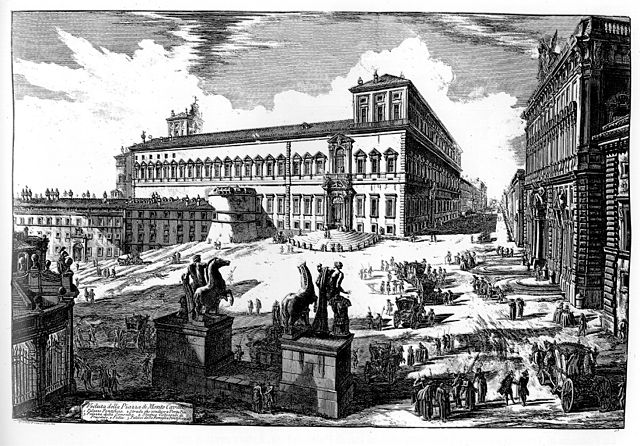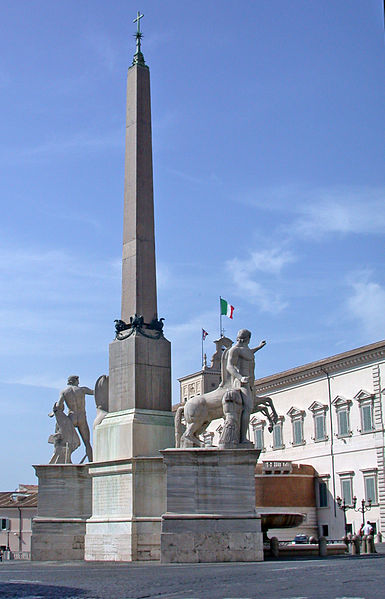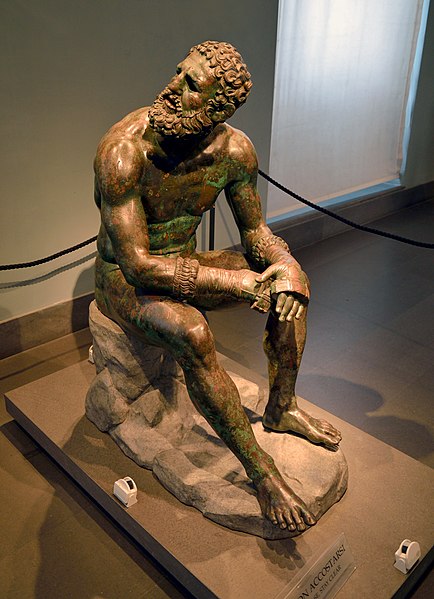The colossal pair of marble "Horse Tamers"—often identified as Castor and Pollux—have stood since antiquity near the site of the Baths of Constantine on the Quirinal Hill, Rome. Napoleon's agents wanted to include them among the classical booty removed from Rome after the 1797 Treaty of Tolentino, but they were too large to be buried or to be moved very far. They are fourth-century Roman copies of Greek originals. They gave to the Quirinal its medieval name Monte Cavallo, which lingered into the nineteenth century. Their coarseness has been noted, while the vigor—notably that of the horses—has been admired. The Colossi of the Quirinal are the original exponents of this theme of dominating power, which has appealed to powerful patrons since the seventeenth century, from Marly-le-Roi to Saint Petersburg.

A mid-18th century etching of the Palazzo del Quirinale by Giovanni Battista Piranesi: the colossal "Horse Tamers" are shadowed in the foreground, but the obelisk from the Mausoleum of Augustus (erected 1783–1786) has not yet been set up between them.
An equivalent view today
One of the "Horse Tamers" today
The Capitoline "Horse Tamers"
Baths of Constantine (Rome)
Baths of Constantine was a public bathing complex built on Rome's Quirinal Hill, beside the Tiber River, by Constantine I, probably before 315.
Remains of the Baths of Constantine in the 16th century
Castor & Pollux with their horses in Piazza del Quirinale
Boxer at Rest
The "Tiber" in the Campidoglio








